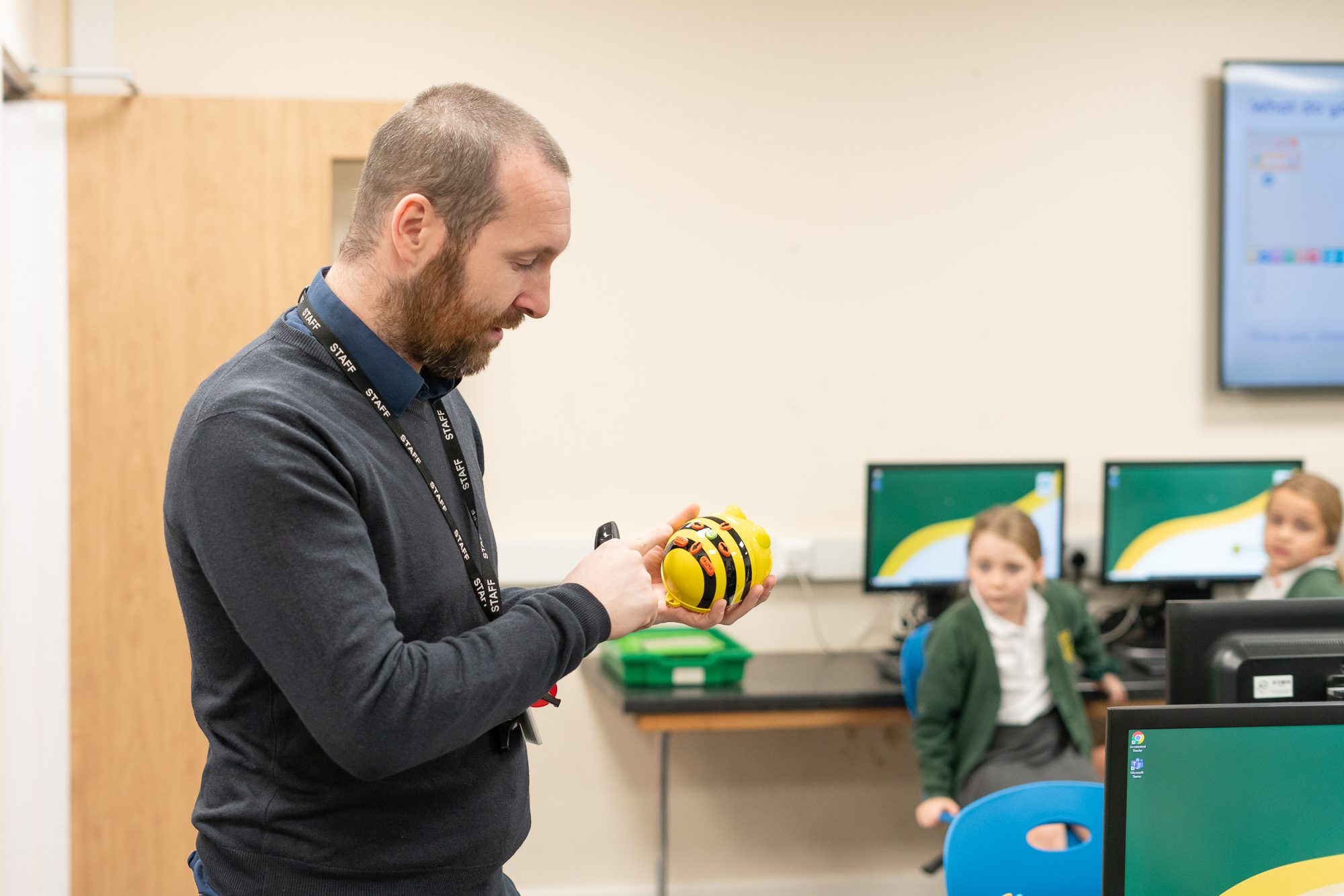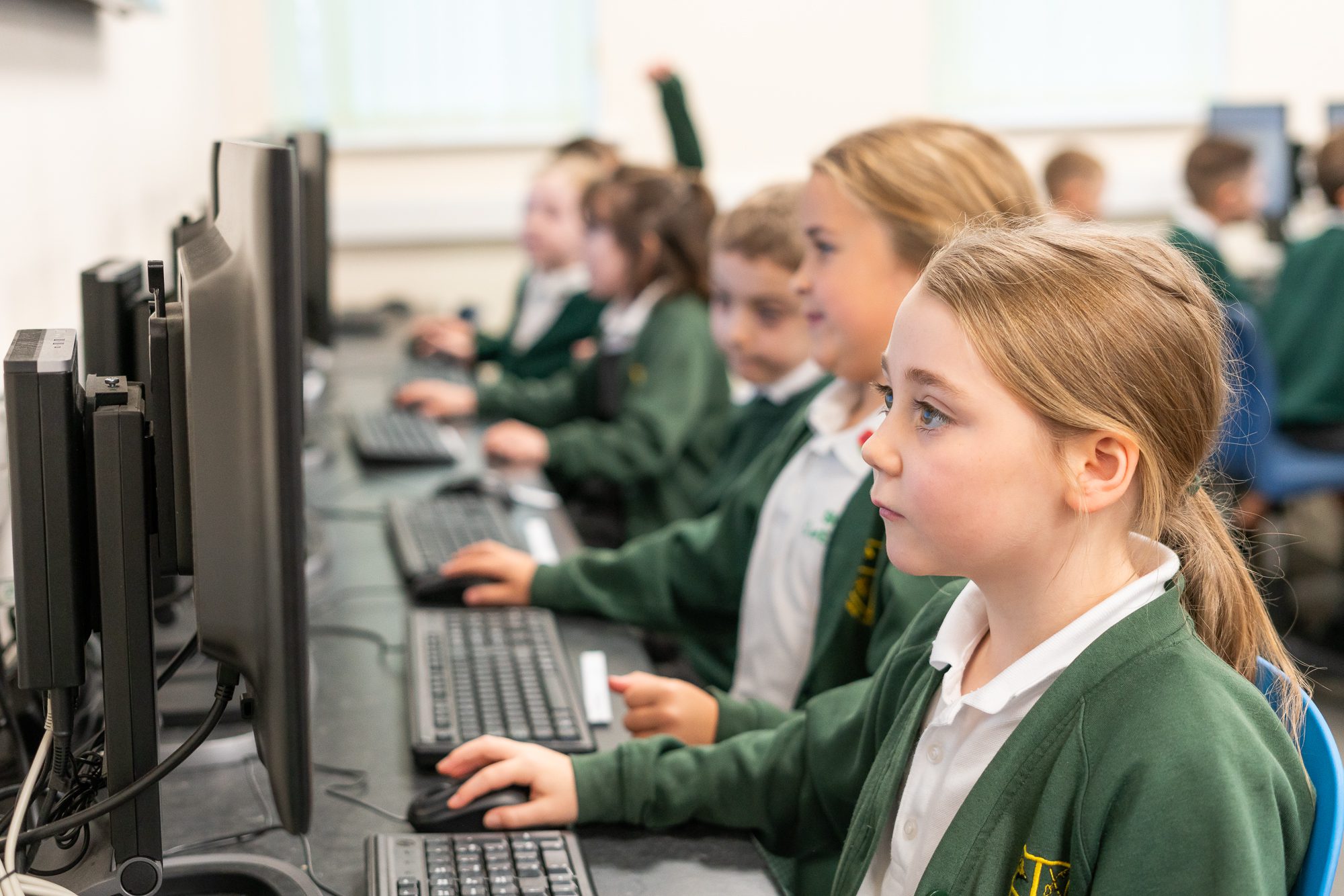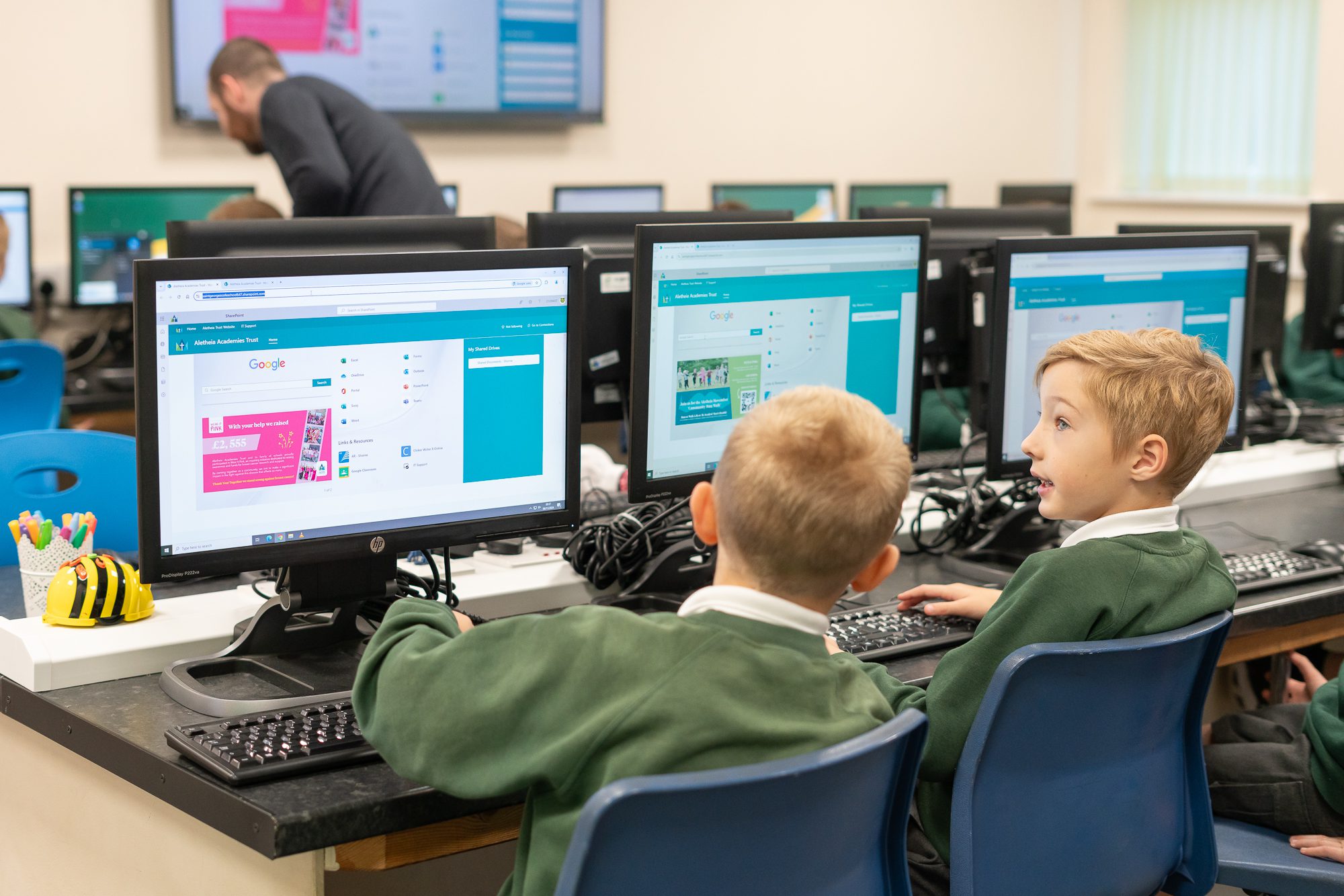Computing Subject Leader: Mr A Farnell
With an ever-growing technological society, the demand for learning computing skills is essential to the education of pupils and opens pupils’ eyes to the digital world of computer science, information technology and digital literacy.
Intent
The Computing National Curriculum states that schools need to provide a high-quality computing education which equips children with computational thinking and creativity to understand and change the world. This ideology is replicated here at Shorne C of E Primary School. Computing links closely with mathematics, science, and design technology. Children will have the opportunity to learn how computers and computer systems work and understand how they are designed and programmed.
The curriculum covers three main areas: information technology, computer science and digital literacy which is all covered with the Computing Curriculum at Shorne. By the time they leave Shorne, the children would have experience in:
- Information Technology (word processing, presentations, data handling)
- Computer Science (Coding and programming, and understanding computer networks)
- Digital Literacy (Using technology safely and analysing digital content)
These areas are covered throughout both Key Stages to help engage children to be more confident participants in the active world.
We have a strong focus on online safety and awareness of our digital footprint to support the ongoing safeguarding and protection of our learners.


Implementation
Our curriculum is supported by the Teach Computing scheme of work. The pedagogy around this scheme is underpinned by 12 principles:
Lead with concepts
Support pupils in the acquisition of knowledge, through the use of key concepts, terms, and vocabulary, providing opportunities to build a shared and consistent understanding. Glossaries, concept maps, and displays, along with regular recall and revision, can support this approach.
Work together
Encourage collaboration, specifically using pair programming and peer instruction, and also structured group tasks. Working together stimulates classroom dialogue, articulation of concepts, and development of shared understanding
Get hands-on
Use physical computing and making activities that offer tactile and sensory experiences to enhance learning. Combining electronics and programming with arts and crafts (especially through exploratory projects) provides pupils with a creative, engaging context to explore and apply computing concepts.
Unplug, unpack, repack
Teach new concepts by first unpacking complex terms and ideas, exploring these ideas in unplugged and familiar contexts, then repacking this new understanding into the original concept. This approach (semantic waves) can help pupils develop a secure understanding of complex concepts.
Model everything
Model processes or practices — everything from debugging code to binary number conversions — using techniques such as worked examples and live coding. Modelling is particularly beneficial to novices, providing scaffolding that can be gradually taken away.
Foster program comprehension
Use a variety of activities to consolidate knowledge and understanding of the function and structure of programs, including debugging, tracing, and Parson’s Problems. Regular comprehension activities will help secure understanding and build connections with new knowledge.
Create projects
Use project-based learning activities to provide pupils with the opportunity to apply and consolidate their knowledge and understanding. Design is an important, often overlooked aspect of computing. Pupils can consider how to develop an artefact for a particular user or function, and evaluate it against a set of criteria.
Add variety
Provide activities with different levels of direction, scaffolding, and support that promote learning, ranging from highly structured to more exploratory tasks. Adapting your instruction to suit different objectives will help keep all pupils engaged and encourage greater independence.
Challenge misconceptions
Use formative questioning to uncover misconceptions and adapt teaching to address them as they occur. Awareness of common misconceptions alongside discussion, concept mapping, peer instruction, or simple quizzes can help identify areas of confusion.
Make concrete
Bring abstract concepts to life with real-world, contextual examples and a focus on interdependencies with other curriculum subjects. This can be achieved through the use of unplugged activities, proposing analogies, storytelling around concepts, and finding examples of the concepts in pupils’ lives.
Structure lessons
Use supportive frameworks when planning lessons, such as PRIMM (Predict, Run, Investigate, Modify, Make) and Use-Modify-Create. These frameworks are based on research and ensure that differentiation can be built in at various stages of the lesson.
Read and explore code first
When teaching programming, focus first on code ‘reading’ activities, before code writing. With both block-based and text-based programming, encourage pupils to review and interpret blocks of code. Research has shown that being able to read, trace, and explain code augments pupils’ ability to write code.
Impact
Our learners become proficient users of technology and know how to keep themselves and others safe when using technology. They are well-equipped for future development in technology and know how to use a broad range of hardware and software. Their learning builds over time, and where knowledge is acquired, it is deepened through revisiting concepts.

Computing in Each Stage
In EYFS, pupils will begin their computing education using the interactive whiteboard, touchscreens, and computers where appropriate, creating a foundation for the understanding of technology.
Children will learn to give simple instructions to small robots to make things happen. They will identify different devices that can go online, and separate those that do not. They will then begin to discuss and share how and when they use ICT in everyday life, with an emphasis on the children understanding the rules around e-safety and knowing who to tell if something concerns them online.
Children will understand what algorithms are, how they are implemented as programs on digital devices, and that programs execute by following a sequence of instructions. They will then use this knowledge to write and test their own programs. They will learn ways to communicate safely, respecting and considering other people’s feelings online. Year 2 children will be expected to be able to identify personal information that should be kept private and recognise common uses of ICT beyond school.
Children will be able to use logical reasoning to explain how a simple algorithm works and then use sequence, selection and repetition in programs. Children will become safer online as they learn to recognise online behaviours that would be unfair; think before sending messages and suggest consequences of sending/posting. Children will also use different approaches to search and retrieve digital information including the browser address bar and shortcuts. Children should also begin to demonstrate knowledge of computer systems and hardware by describing input and output devices used in everyday life.
By the end of year 4 children should be able to detect and correct errors in algorithms and programs (debug); test programs using models and simulations; design and write programs that accomplish specific goals, working with variables for input and output. They should also know who to tell if anything worries them online and begin to recognise social networking sites and social networking features built into other things (such as online games and handheld games consoles) whilst making judgements in order to stay safe whilst communicating with others online.
With support, children will begin to produce algorithms by using logical and appropriate structures to organise data and create precise and accurate sequences of instructions. They will use flowcharts and other diagrams to follow how a process or model works. Children will be able to articulate what constitutes good behaviour online and judge what sort of privacy settings might be relevant for reducing different risks. When using a search engine children should understand the need for accuracy when searching for and selecting information whilst using different sources to double check information found.
Children will produce algorithms independently using logical and appropriate structures to organise and record data. Using this knowledge, children will be able to design and create a range of programs to accomplish given goals. They will be able to discuss scenarios involving online risk and find, report and flag buttons in commonly used sites and name sources of help e.g. Childline and Cybermentors. Find a Click- CEOP button and explain to parents what it is for.
Computing Progression
SEND Information
Interventions, support, and challenges are constantly revised and adapted to ensure all children are supported in achieving learning. Learning is robustly and continuously monitored and assessed to ensure gaps in learning are addressed. Teachers and support staff offer adaptive teaching to enable access for all, and may provide scaffolds, pre-teaching, and other support and intervention, as outlined in the Kent Mainstream Core Standards. Pupils may also be supported to access learning through the use of Clicker software.

